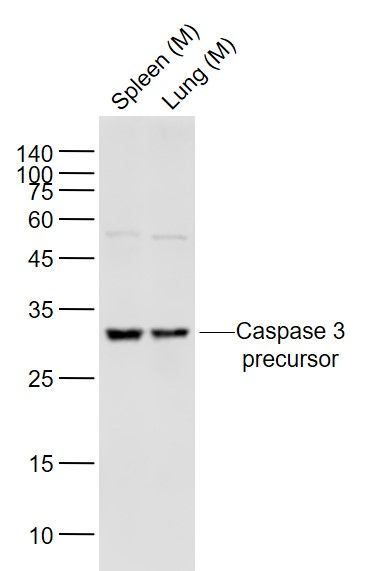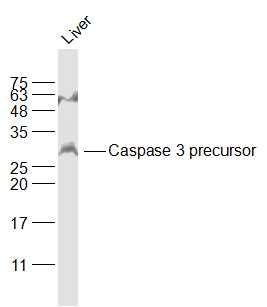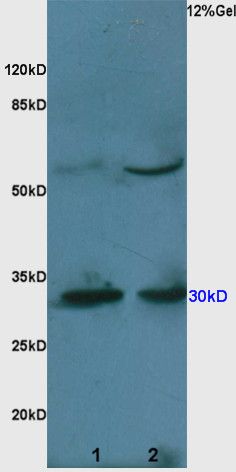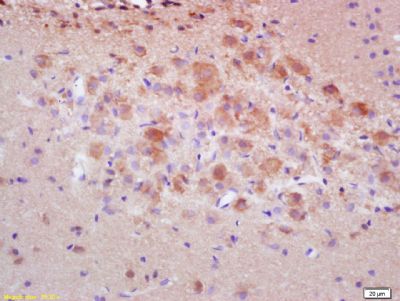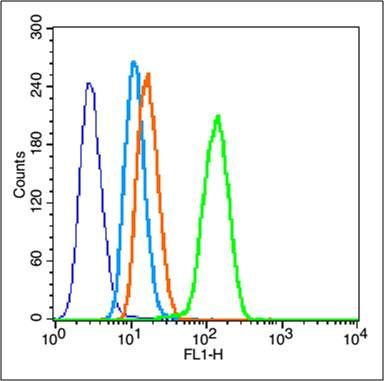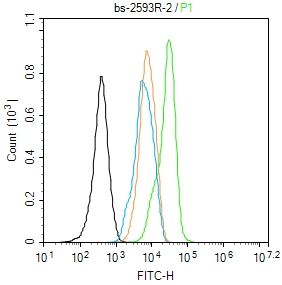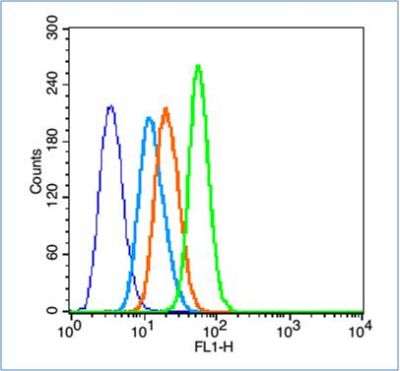[IF=3.845] Zhu Z et al. Perindopril Improves Cardiac Function by Enhancing the Expression of SIRT3 and PGSLC1α in a Rat Model of Isoproterenol-Induced Cardiomyopathy. Front Pharmacol. 2020 Feb 21;11:94. WB ; Rat.
[IF=3.738] Salman, Giray. et al. Anticancer Effects of Vitis vinifera L. Mediated Biosynthesized Silver Nanoparticles and Cotreatment with 5 Fluorouracil on HT-29 Cell Line. 2021 Sep 21 WB ; human.
[IF=2.406] Simsek, Aysel. et al. Anti-proliferative and apoptotic effects of green synthesized silver nanoparticles using Lavandula angustifolia on human glioblastoma cells. 3 Biotech. 2021 Aug;11(8):1-10 WB ; Human.
[IF=4.486] Mingying Han. et al. Verapamil inhibits early acute liver failure through suppressing the NLRP3 inflammasome pathway. 2021 May 24 WB ; Mouse.
[IF=2.23] Wang et al. Ginsenoside Rd inhibits apoptosis following spinal cord ischemia/reperfusion injury. (2014) Neural.Regen.Res. 9:1678-87 IHC ; Rat.
[IF=6.691] Barzegar-fallah, Anita. et al. Serotonin type-3 receptor antagonists selectively kill melanoma cells through classical apoptosis, microtubule depolymerisation, ERK activation, and NF-κB downregulation. 2021 Oct 15 WB ; Human,Mouse.
[IF=3.105] Huan-Tong Wu. et al. Edaravone attenuates H2O2 or glutamate-induced toxicity in hippocampal neurons and improves AlCl3/D-galactose induced cognitive impairment in mice. Neurotoxicology. 2021 Jul;85:68 WB ; Rat.
[IF=5.74] Duan, Xiaoxu, et al. "Antioxidant tert-butylhydroquinone ameliorates arsenic-induced intracellular damages and apoptosis through induction of Nrf2-dependent antioxidant responses as well as stabilization of anti-apoptotic factor Bcl− 2 in human keratinocytes." Free Radical Biology and Medicine(2016). WB ; Human.
[IF=1.06] Zhang, Xiaolin, and Hao Yu. "Matrine inhibits diethylnitrosamine-induced HCC proliferation in rats through inducing apoptosis via p53, Bax-dependent caspase-3 activation pathway and down-regulating MLCK overexpression (Supplement 2016)." Iranian Journal of Pharmaceutical Research (2016). WB ; Rat.
[IF=3.85] Luo, Xiaoming, et al. "Pharmacokinetics and antitumor efficacy of micelles assembled from multiarmed amphiphilic copolymers with drug conjugates in comparison with drug-encapsulated micelles." European Journal of Pharmaceutics and Biopharmaceutics (2015). IHSLCP ; Mouse.
